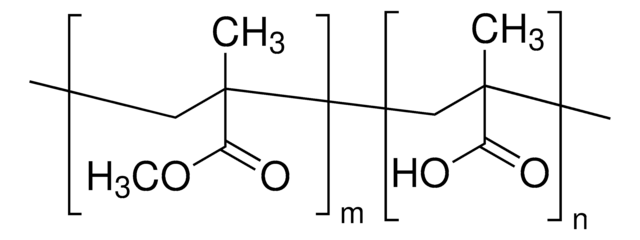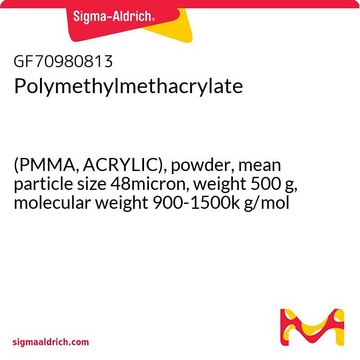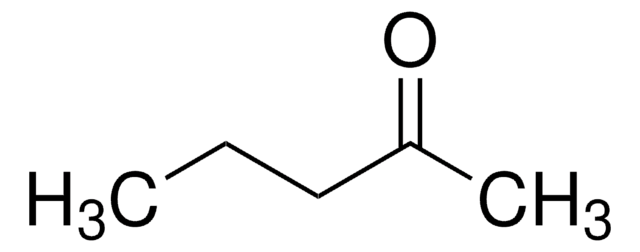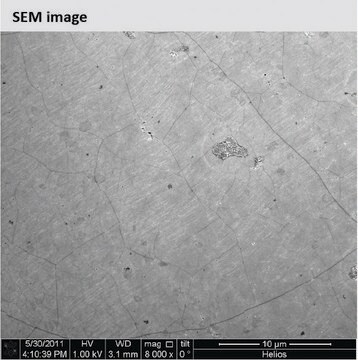182265
Poly(methyl methacrylate)
Synonym(s):
PMMA, Poly(methacrylic acid methyl ester)
About This Item
Recommended Products
form
solid
Quality Level
autoignition temp.
580 °F
transition temp
Tg (DSC) 105 °C (midpoint)
solubility
H2O: insoluble
density
1.200 g/cm3
InChI
1S/C5H9O2/c1-4(2)5(6)7-3/h1-3H3
InChI key
PMAMJWJDBDSDHV-UHFFFAOYSA-N
Looking for similar products? Visit Product Comparison Guide
General description
Application
Some studies report its use as
PMMA-titania hybrid optical thins films
PMMA/polystryrene/clay nanocomposites
PMMA/polyurethane/carbon black nanocomposites for methanol fuel cells.
Storage Class Code
11 - Combustible Solids
WGK
nwg
Personal Protective Equipment
Regulatory Listings
Regulatory Listings are mainly provided for chemical products. Only limited information can be provided here for non-chemical products. No entry means none of the components are listed. It is the user’s obligation to ensure the safe and legal use of the product.
JAN Code
182265-500G:
182265-25G:
182265-BULK:
182265-1KG:
182265-VAR:
Choose from one of the most recent versions:
Already Own This Product?
Find documentation for the products that you have recently purchased in the Document Library.
Customers Also Viewed
Articles
Professor Aran (Claremont University, USA) thoroughly discusses the engineering of graphene based materials through careful functionalization of graphene oxide, a solution processable form of graphene.
Developed in the last several years, fluorescence quenching microscopy (FQM) has enabled rapid, inexpensive, and high-fidelity visualization of two-dimensional (2D) materials such as graphene-based sheets and MoS2.
A Review of Mesoporous TiO2 Thin Films
Our team of scientists has experience in all areas of research including Life Science, Material Science, Chemical Synthesis, Chromatography, Analytical and many others.
Contact Technical Service




